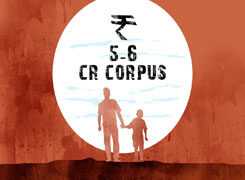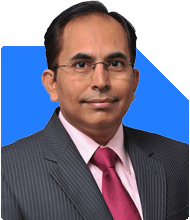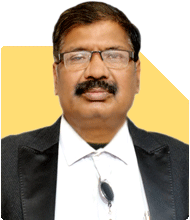Ramalingam Kalirajan |8098 Answers |Ask -Follow
Mutual Funds, Financial Planning Expert - Answered on May 12, 2024
He has an MBA in finance from the University of Madras and is a certified financial planner.
He is the director and chief financial planner at Holistic Investment, a Chennai-based firm that offers financial planning and wealth management advice.... more

Like sukanya samridhi yojna for girl Any boy scheme like that with guarented income is there ? Kindly reply What is the best way to invest in gold as gold rates have already been increased. When and how to invest in gold. Best insurance policy for me of age 36 till my retirement.
For your son's future, there isn't a scheme exactly like Sukanya Samriddhi Yojana, which is specific to girls. However, you can explore various government-backed savings schemes or investment plans that offer guaranteed returns. These may include schemes like Public Provident Fund (PPF) or fixed deposits. Consult a Certified Financial Planner to find the best fit for your needs and goals.
As for investing in gold, it's true that gold rates have been on the rise. While timing the market perfectly is challenging, you can still invest systematically over time through methods like gold ETFs (Exchange-Traded Funds) or gold savings funds. These allow you to invest in gold without physically owning it, offering liquidity and convenience. Regular investment, regardless of current rates, can help mitigate the risk of market volatility.
When considering insurance, it's important to assess your needs and priorities. At 36, you may opt for a term insurance plan that provides coverage until your retirement age. Term plans offer high coverage at affordable premiums, ensuring financial protection for your family in case of unfortunate events. Look for plans with riders like critical illness or accidental death benefit for comprehensive coverage.
Remember to review your insurance needs periodically to ensure they align with your changing circumstances.
Investing and securing your future require careful planning and informed decisions. Consult a Certified Financial Planner to tailor strategies that suit your financial goals and risk tolerance.
Best Regards,
K. Ramalingam, MBA, CFP,
Chief Financial Planner,
www.holisticinvestment.in
You may like to see similar questions and answers below
Sunil Lala | Answer |Ask -Follow
Financial Planner - Answered on Feb 26, 2024
Ramalingam Kalirajan |8098 Answers |Ask -Follow
Mutual Funds, Financial Planning Expert - Answered on Apr 23, 2024
Ramalingam Kalirajan |8098 Answers |Ask -Follow
Mutual Funds, Financial Planning Expert - Answered on May 25, 2024
Ravi Mittal |546 Answers |Ask -Follow
Dating, Relationships Expert - Answered on Mar 13, 2025
Janak Patel |21 Answers |Ask -Follow
MF, PF Expert - Answered on Mar 13, 2025
Radheshyam Zanwar |1415 Answers |Ask -Follow
MHT-CET, IIT-JEE, NEET-UG Expert - Answered on Mar 13, 2025
Radheshyam Zanwar |1415 Answers |Ask -Follow
MHT-CET, IIT-JEE, NEET-UG Expert - Answered on Mar 13, 2025
Ramalingam Kalirajan |8098 Answers |Ask -Follow
Mutual Funds, Financial Planning Expert - Answered on Mar 13, 2025
Ramalingam Kalirajan |8098 Answers |Ask -Follow
Mutual Funds, Financial Planning Expert - Answered on Mar 13, 2025
Ramalingam Kalirajan |8098 Answers |Ask -Follow
Mutual Funds, Financial Planning Expert - Answered on Mar 13, 2025
Rajesh Kumar Singh |194 Answers |Ask -Follow
IIT-JEE, GATE Expert - Answered on Mar 13, 2025
Ramalingam Kalirajan |8098 Answers |Ask -Follow
Mutual Funds, Financial Planning Expert - Answered on Mar 13, 2025
Rajesh Kumar Singh |194 Answers |Ask -Follow
IIT-JEE, GATE Expert - Answered on Mar 13, 2025


























